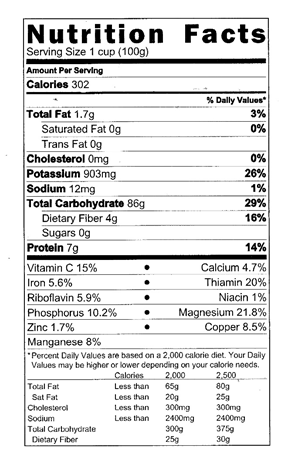Opinion: How breadfruit became a staple food in the Caribbean - Pt. 1

In this four-part series, Michael McLaughlin of the Trees That Feed Foundation (TTFF) discusses how the organization has helped transform families' lives the world over with the humble breadfruit. In part one, he looks at the complex history of the fruit and how the TTFF got started on its journey.
 Breadfruit is a staple food for millions of people, yet is little known in North America and the developed countries of the world. It’s a big round fruit, typically weighing 1.5 to 2 kilos, and is a close relative of the jackfruit. The skin is green, although when ripe, a few white lines of food latex stripe the skin. Inside, under the skin is a firm white flesh.
Breadfruit is a staple food for millions of people, yet is little known in North America and the developed countries of the world. It’s a big round fruit, typically weighing 1.5 to 2 kilos, and is a close relative of the jackfruit. The skin is green, although when ripe, a few white lines of food latex stripe the skin. Inside, under the skin is a firm white flesh.
It’s starchy, so the fruit has to be cooked…roasted, fried or boiled…before eating. It’s mild tasting and very nutritious, with carbohydrate calories, protein, potassium, riboflavin and more.
Breadfruit has an interesting history. It originated probably in New Guinea, and was carried around the Pacific by islanders across Oceania. Many varieties exist due to natural adaptation to different local environments. It was and still is an important food source throughout the tropical Pacific region.
In the 18th Century slavery was common in the West Indies and South America. Due to weather extremes, namely droughts and storms, there were frequent food shortages. The colonial powers, starting with the British, needed food for the slaves to keep the plantations operating. Sir Joseph Banks in the 1790’s commissioned Captain Bligh to collect breadfruit plants from Tahiti, and take them to the West Indies.
On his first voyage there was the famous Mutiny on the Bounty, and the breadfruit plants were all lost. Bligh survived the mutiny, and two years later was given a second ship, and this latter expedition was successful. Several hundred healthy young breadfruit saplings were delivered to the Caribbean islands of St. Vincent and Jamaica. French ships also brought breadfruit to the region around that same time. Most of the breadfruit trees in the Caribbean trace back 200 years, to those early days … until recently. More about that later.
The enslaved peoples were not impressed with this new food, at first. It had an unfamiliar appearance and taste. And there were no nutritional labels available at the time—so they were unaware of its fiber, protein, potassium, magnesium, thiamine and riboflavin content.
In a few years however, especially with few alternatives, breadfruit came to be widely accepted. Today, breadfruit is a common part of the diet in many Pacific and Caribbean countries, across all demographic groups, rich and poor alike.
Breadfruit trees were accepted and somewhat taken for granted for centuries. That is, until a lady named Mary McLaughlin showed up. One Sunday morning back in 2007, sipping coffee in bed, she turned to her husband and said, “you know, we’ve been fortunate in life. We should share our good luck with others.” She suggested planting trees.
The idea was for the environmental benefits of trees, at first. But then they figured, if planting a tree is a good idea, planting a fruit tree is even better! Then there’s food! Jamaica, Haiti and many other tropical countries lack sufficient foods, despite the favorable climate for agriculture.
Trees need relatively little care and unlike grain and vegetable crops, do not need to be replanted each year. And locally produced foods in so many ways are preferable to imports. Very quickly Mary’s idea morphed into a charitable effort dedicated to feeding hungry or undernourished people, using locally produced food from trees.
Trees That Feed Foundation was formed in 2008, and charitable status was approved by the US Government. Mary and Mike McLaughlin identified two sources of breadfruit trees. Cultivaris, based in the US, mass produces seedlings of several varieties new to the Caribbean, through a tissue culture process.
McLean’s Nursery in Portland, Jamaica, uses a low-tech but very effective method of root propagation for several local varieties of breadfruit. Either source can provide seedlings in quantities of 2,000 or more, in one fell swoop.
TTFF operations began in 2009 with delivery of seventy-two trees. These were Ma’afala breadfruit, a very popular variety in Samoa and elsewhere in the Pacific region. The trees are smaller than local trees, meaning that the fruit are easy to harvest.
The fruit is also smaller, and easy to cook. Their nutrition quality and taste are superb. All those first trees are still alive and well, in an orchard plantation at the Government of Jamaica’s research station, where they are being carefully monitored.
That’s where Trees That Feed Foundation launched. As of this writing, over 100,000 trees have been provided to Jamaica, Haiti and other countries. They are bearing fruit and feeding people…and helping the environment.
Mary and Mike have set out to educate on the many benefits of agroforestry. Awareness of the benefits of fruit tree planting are growing. In future articles in this series you’ll read about rising interest in breadfruit around the world, not only for nutrition, not only for the environment, but also you’ll hear gratifying stories about the jobs being created.
The visit the Trees That Feed Foundation website, click here.







































